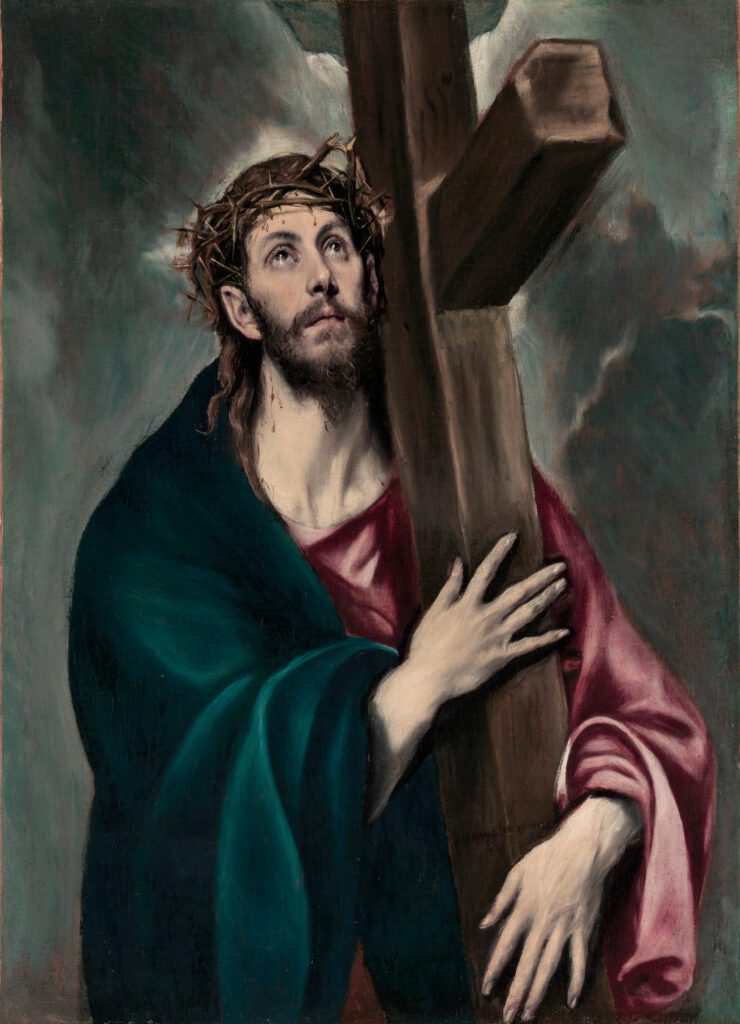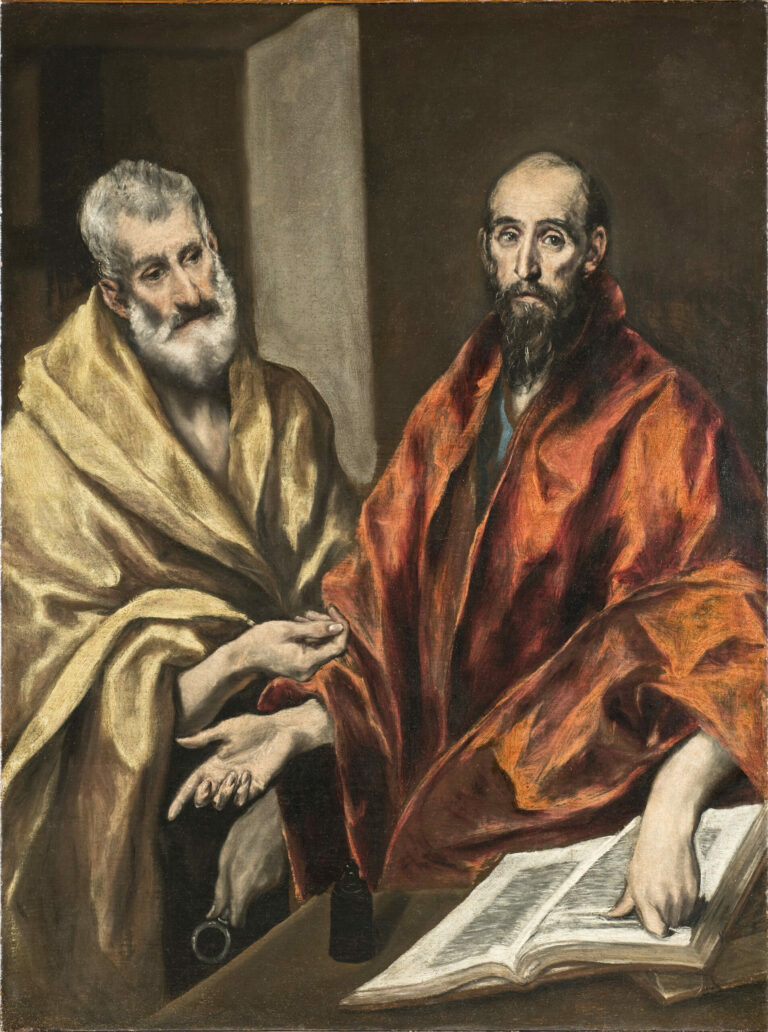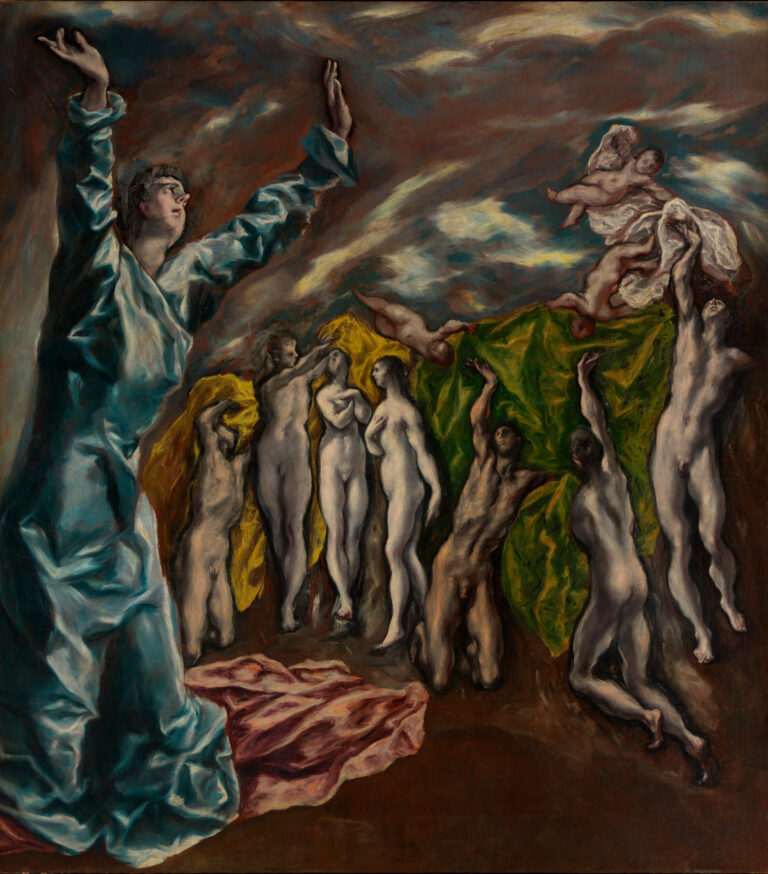In this “Christ Carrying the Cross” (c. 1577-1587), El Greco delivers a spiritual vision of tremendous intensity. Far from traditional narrative representations of the Way of the Cross, the artist isolates Christ in an undefined space.
The tight framing heightens the emotional power of the work and plunges us into a disturbing intimacy with the divine. Christ’s emaciated face rises toward heaven in a movement of surrender and transcendence. His gaze, of poignant expressiveness, implores divine mercy while fully accepting his sacrifice.
The chromatic palette, the master’s inimitable signature, plays on the striking contrast between the deep blue of the mantle and the brilliant purple of the tunic—symbolic colors of divinity and martyrdom. The treatment of the drapery, with serpentine and luminous folds, gives the composition an ascending rhythm that transforms suffering into spiritual elevation.
Object Information
- Christ Carrying the Cross, by El Greco (Doménikos Theotokópoulos), c. 1577-1587
- 105 x 79 cm
- The Metropolitan Museum of Art, Fifth Avenue, New York, Gallery 619
- https://www.metmuseum.org/art/collection/search/459087
Doménikos Theotokópoulos, known as El Greco (1541-1614), embodies one of the most singular geniuses in the history of Western art. Born in Crete, trained in Venice and then Rome, it was in Toledo that he developed his highly personal style, merging Byzantine heritage, the lessons of the Italian Renaissance, and Spanish mystical fervor. His manner, characterized by elongated figures, acidic and unreal colors, and an almost supernatural inner light, was long misunderstood before being rediscovered in the early 20th century. This work perfectly illustrates his ability to transform a traditional religious subject into an ardent spiritual vision, anticipating by several centuries the boldness of modern expressionism.



